Living room design requires innovative tools; 3D home modeling software serves this need effectively. Designers utilize these tools to visualize spaces comprehensively. Users create detailed layouts, incorporating furniture, textures, and colors, directly within the software environments. These applications support various design styles, including modern, traditional, and eclectic, offering flexibility in planning. They enable quick alterations, facilitating the exploration of numerous arrangements without physical effort. Data indicates that designers using 3D modeling software increase project approval rates by up to 35%, attributed to the realistic representations provided to clients.
Software options vary significantly in functionality and usability. SketchUp offers extensive libraries and a supportive community, making it suitable for professionals. In contrast, Arcadium 3D prioritizes simplicity and speed, catering to interior designers and non-professionals needing to create 3D house plans swiftly. Sweet Home 3D stands out for its ease of use, appealing to beginners. Meanwhile, Arcadium 3D distinguishes itself by operating directly in browsers, eliminating the need for complex installations or powerful computing hardware. This accessibility facilitates wider usage among users with varied technical capacities.
In the context of living room design, Arcadium 3D presents a compelling option for those seeking uncomplicated, yet powerful tools for creating realistic 3D models quickly. Its browser-based nature ensures that users can begin designing immediately, offering an efficient solution for both professional designers and design enthusiasts aiming to visualize and refine their living room layouts with minimal hassle.
Contents:
Top 3D Home Modeling Software for Living Room Designs
What sets apart the leading 3D home modeling programs for living room designs? Their intuitive interfaces make them stand out. Users find navigation straightforward, ensuring they can focus on creativity rather than grappling with complex tools. These programs offer extensive libraries of furniture, fixtures, and finishes, enabling users to visualize their ideas accurately.
Why are customization options crucial in these programs? They allow for unique living room creations. Each user can tailor aspects like lighting, textures, and materials to match their vision precisely. This flexibility ensures that designs can range from minimalist to baroque, reflecting individual preferences and lifestyles accurately.
How do these software tools aid in decision-making? They provide realistic visualizations of proposed living room designs. Homeowners can see potential layouts, color schemes, and furniture arrangements in 3D before committing to any changes. This capability minimizes the risk of costly mistakes, ensuring satisfaction with the final result.
In terms of user support and community resources, the top programs offer more than just basic functions. They come with tutorials, forums, and customer service teams to assist users at every step. Meanwhile, lesser-known programs might lack these extensive support networks, making the design process more challenging for novices. The best software not only facilitates the creation of beautiful living rooms but also ensures a smooth and enjoyable design experience.
Key Benefits of Using 3D Software in Living Room Planning
Why should one consider 3D software for living room design? The precision offered significantly reduces errors. Digital models ensure accurate dimensions, preventing mismatches in furniture sizes and room space. Visualizing color schemes and textures becomes straightforward, avoiding clashes and mismatches in decor elements.
How does 3D modeling enhance the planning process? It streamlines decision-making. Clients visualize changes instantly, making it easier to swap out sofas for loveseats or hardwood for tiles without real-world repercussions. This flexibility saves time and money, eliminating the need for physical samples and mock-ups.
What are the advantages for client communication? It improves understanding and satisfaction. Presenting designs in three dimensions bridges the gap between concept and reality, allowing for clearer depiction of proposed outcomes. Feedback becomes more specific, facilitating adjustments that align closely with client desires.
3D software transcends traditional drawing techniques in living room planning, offering unparalleled clarity and adaptability. Designs morph with a few clicks, whereas manual revisions require hours of redrawing. The gap between imagination and visualization narrows, fostering a creative process that traditional methods struggle to match.
Living Room Layout Optimization Techniques
Why consider the flow of movement within your living room? Efficient navigation ensures comfort. Chairs, sofas, and tables direct traffic, while clear paths promote ease of movement, distinguishing cozy areas from walkways. Rugs anchor conversation spots, separating them visually and functionally from thoroughfares.
How does the choice of furniture impact your living space? Proportional selections enhance spatial harmony. Small armchairs suit compact rooms, large sectionals fill expansive areas adequately. Furniture with legs appears lighter, making rooms feel larger, while solid bases offer a grounded, stable look.
What role do lighting fixtures play in layout optimization? They define zones and set moods. Floor lamps illuminate reading nooks, pendant lights highlight dining sections, and dimmable ceiling lights adjust the ambiance for gatherings or relaxation. Strategically placed, lighting not only brightens but also visually organizes the space, creating layers of interest and function.
In terms of optimizing living room layouts, utilizing 3D home modeling software offers a clear advantage over traditional paper sketches. These digital tools provide immediate visual feedback, allowing for rapid experimentation with furniture arrangements and lighting effects. Users can simulate various scenarios to find the most functional and aesthetically pleasing arrangement, a process that is far less time-consuming than physically moving items around. Moreover, these programs often include vast libraries of furniture and fixtures, giving users the ability to explore options beyond their current possessions, thereby expanding the possibilities for creating an ideal living space.
Furniture Selection and Placement with 3D Modeling
How does 3D modeling transform furniture selection? It allows precise visualization. Chairs, tables, and sofas become easily adjustable within digital spaces, offering a view from every angle. This process simplifies decision-making, enhances aesthetic cohesion, and ensures spatial compatibility.
What role does placement play in 3D home modeling? It's critical for flow and functionality. Through 3D technology, users can experiment with layouts, shifting items like lamps, bookshelves, and rugs across various points in the room. This flexibility promotes optimal usage of space, encourages creative designs, and prevents overcrowding.
Can 3D modeling reveal the impact of different styles? Absolutely. Whether considering minimalist sofas or ornate coffee tables, users can mix and match styles. This capability supports diverse theme experimentation, from modern to rustic, and evaluates how each piece contributes to the overall ambiance.
In the context of 3D modeling, traditional methods of selecting and positioning furniture rely more on imagination and less on precision. Users of 3D technology gain the advantage of error reduction, as the digital environment permits unlimited adjustments without physical effort or cost. This approach offers a broader perspective, enabling the evaluation of how natural light interacts with furniture arrangements throughout the day, an insight rarely achievable through conventional planning.
Innovative Living Room Themes and Styles
What defines the epitome of a modern sanctuary within the home? Look no further than minimalist concepts, where simplicity reigns supreme. Furnishings feature clean lines; decorations are sparse yet impactful. This theme embodies tranquility and order, turning the living room into a haven of serenity.
How can one infuse vibrancy into a living space without overwhelming the senses? Enter the eclectic approach, where harmony meets diversity. Wall colors serve as the canvas for a myriad of textures and patterns, furniture varies in design yet somehow coexists peacefully. This method celebrates individuality and brings an array of visual interest to the living room.
What allows for a personal touch that feels both timeless and bespoke? The answer lies in vintage themes, where history and comfort intertwine. Each piece tells a story, be it an heirloom or a carefully chosen replica. Fabrics lean towards the luxurious, such as velvet and silk, enveloping the space in a sense of warmth and nostalgia.
Innovative living room themes and styles offer a broader spectrum of creativity and personal expression than traditional approaches. Minimalist designs emphasize space and light, offering a stark contrast to the cozy, cluttered feel of a country-style living room. Eclectic styles allow for a more vibrant and diverse visual experience than the uniformity found in classic modern designs. Vintage themes invite warmth and depth, setting them apart from the stark, industrial look favored in contemporary minimalism. Each style serves distinct tastes and preferences, illustrating the versatility and adaptability of using 3D home modeling software in living room design.
How to Visualize Lighting and Color Schemes
How can users effectively visualize lighting in their living rooms? By utilizing 3D home modeling software, individuals can simulate various lighting conditions. This allows them to see how natural light interacts with their space during different times of the day. Software tools enable the testing of artificial lighting solutions, such as lamps, overhead lights, and wall sconces, showing how they illuminate different areas.
What role does color scheme play in 3D modeling? The choice of color impacts the perception of space significantly. Bright colors can make rooms appear larger and more inviting, while dark hues often create an intimate, cozy atmosphere. 3D modeling software provides a palette of colors, allowing the experimentation with wall paints, furniture finishes, and decor items in a virtual environment. This ensures that all elements harmonize before any physical changes are made.
How does texture influence lighting and color schemes in a virtual model? Textures add depth and realism to virtual designs. Glossy surfaces reflect light, enhancing brightness and spaciousness. In contrast, matte finishes absorb light, contributing to a subdued, soft look. Through 3D modeling, designers can mix and match textures with lighting and colors to achieve the desired ambiance. Carpets, curtains, and furniture upholstery are among the items that can be customized in the software to see their effect on the overall design.
3D modeling software surpasses traditional design methods in visualizing lighting and color schemes. This technology offers precision in rendering shadows and highlights, which pencil sketches or simple 2D drawings cannot achieve. The ability to adjust light sources in real-time outperforms the static nature of mood boards. Virtual models present a comprehensive view of how different textures interact with color and light, something that fabric swatches and paint chips alone cannot provide. This leads to more informed decisions, ensuring that the final living room design meets expectations.
Integrating Home Entertainment Systems in 3D Plans
How can one seamlessly integrate home entertainment systems into living room designs using 3D home modeling software? By accurately modeling televisions, speakers, and gaming consoles, the software allows for precise spatial planning. This enables the designer to allocate space efficiently, ensuring each component fits perfectly within the room's layout. Visualization tools in the software assist in determining optimal viewing distances, speaker placement for surround sound, and console positioning for ease of use and aesthetic appeal.
Why is it crucial to consider the wiring and connectivity needs of these systems during the planning stage? Because neglecting this aspect can lead to clutter and accessibility issues once the setup is complete. The software aids in plotting out power sources and cable management solutions, reducing the likelihood of unsightly cords detracting from the room’s overall design. It also ensures that all devices are conveniently connected, enhancing the user's experience by making it easy to switch between different entertainment options.
What benefits do these modeling tools offer for customizing entertainment setups to individual preferences? They allow for the creation of multiple configurations, enabling users to experiment with various arrangements until they find the perfect match for their needs. Whether it's adjusting the size and type of the screen for a cinematic experience or the arrangement of speakers for optimal sound quality, these tools provide the flexibility to tailor every detail. This personalized approach not only maximizes enjoyment but also ensures that the living room remains a versatile space suited to both relaxation and entertainment.
In terms of accuracy and efficiency, manual planning falls short next to the precision and flexibility offered by 3D home modeling software. The latter not only predicts the spatial and aesthetic compatibility of various entertainment systems within a living room setting but also anticipates and resolves potential functional conflicts. Whereas traditional methods rely on estimation and often result in costly adjustments post-installation, 3D modeling provides a detailed preview, ensuring that the final setup meets expectations without the need for significant changes. This approach saves time, reduces expenses, and enhances the overall satisfaction with the end result.
Cost Estimation Features for Living Room Projects
How do cost estimation features in 3D home modeling software simplify budget planning for living room projects? They provide precise calculations of expenses. Users enter the dimensions of their living room and select materials, such as hardwood for floors or velvet for sofas. The software computes the total cost, ensuring users don't overspend.
What types of expenses do these features cover? They encompass a wide array, including furniture, decor, and construction materials. For furniture, options might include armchairs and coffee tables; for decor, rugs and paintings; for construction materials, plaster for walls and ceramic tiles for floors. This comprehensive approach assists users in maintaining a holistic view of their spending.
Are updates on price fluctuations integrated into these systems? Yes, they continuously refresh data. The software links to databases that track the current market prices of various items, such as metals for lamp bases or cotton for curtains. This dynamic ensures that the project estimates remain accurate and reflective of real-time market conditions.
In terms of accuracy and efficiency, manual estimations stand in stark contrast to the capabilities offered by these 3D modeling tools. The former often leads to underestimations or overestimations, hinging heavily on human error. The latter, however, leverages algorithms and up-to-date pricing, minimizing discrepancies and enhancing precision in budgeting for living room designs. This stark difference underscores the value of integrating technology into the planning phases of home renovation and decoration.


 All training, tips and articles
All training, tips and articles
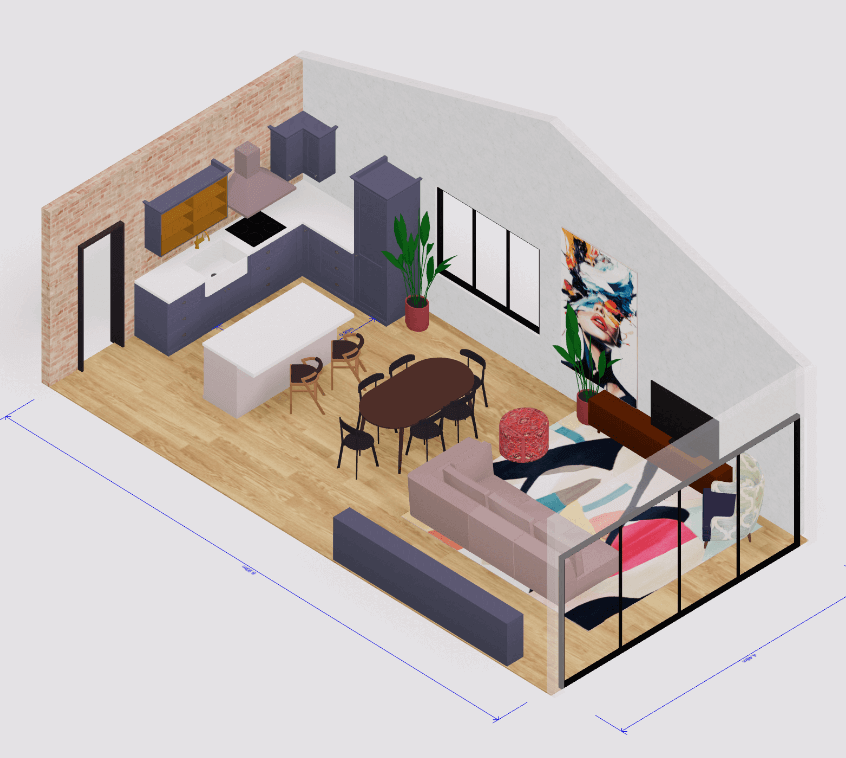 3D house design tool
3D house design tool
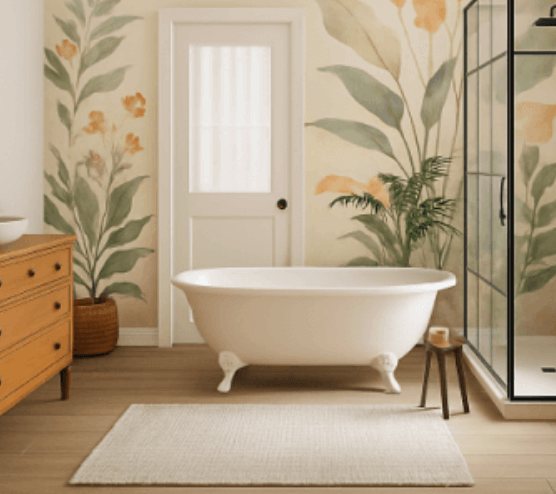
 Color palette generator
Color palette generator
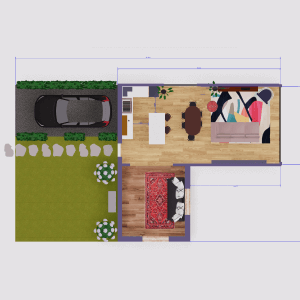 Floor plan creator
Floor plan creator
 Interior design app
Interior design app
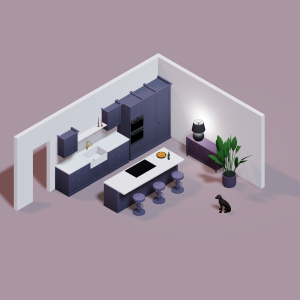 Kitchen design tool
Kitchen design tool
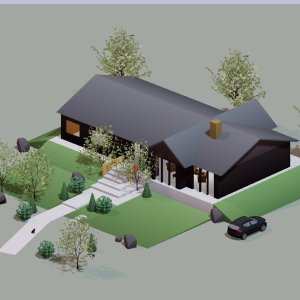 House design software
House design software
 Room designer
Room designer
 Landscape design software
Landscape design software
 Bedroom design
Bedroom design
 Office floor plan creator
Office floor plan creator
.png)



